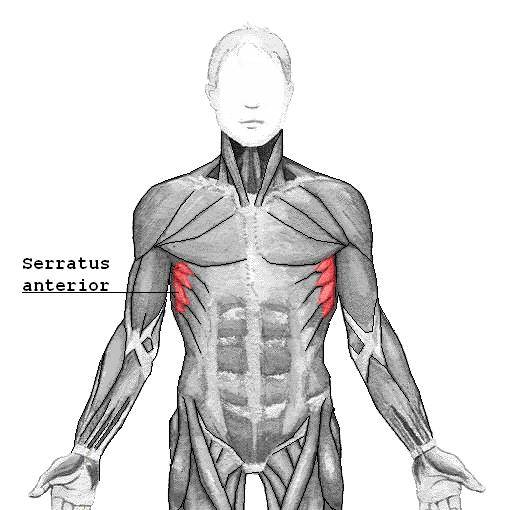There has been a lot of debate in the training world as to the value of stable versus unstable surface training. In general, standing on an unstable surface seems to detract from strength too much to be beneficial. But would it make a difference if our feet were stabilized but our hands were not?
In a recent study in the Journal of Strength and Conditioning Research, researchers sought to find out the effects of using TRX suspension training straps. The research team included Dr. Stuart McGill, who is well known for his work in the field of biomechanics and kinesiology. The researchers compared pressing exercises done with the TRX to more traditional versions of the exercises. Given the similarity between a TRX and, say, gymnastics rings, I suspect that the results would translate to any similar exercise.
There is good reason to believe that training with the TRX might be better at activating muscles compared to doing the same exercises on a stable surface. Recall a prior article of mine that compared the effects of different versions of the overhead press. Standing was compared to sitting, and dumbbells were compared to barbells. In each case the seated version was the more stable one, but there were some unique effects of adding instability to the exercise. For example, the core muscles and the shoulders were shown to benefit from instability.

In today’s study, the researchers were looking at more than just muscle activation. They were also interested in the effect of each method on spine loading and how coaching affected the outcomes. In terms of muscle activation, one of their focuses was on the serratus anterior muscle. The serratus are muscles over your ribs that you can see between your lats and abs, just under your pecs. Their primary function is shoulder protraction, which is when you move your shoulders forward.
The researchers thought the unstable exercises would have the strongest effect on the serratus, but this was not so. The stable exercises tested were the push up, shoulder protraction, and bench press. The TRX exercises used in the study were the TRX push up, TRX push, and TRX scapular push up. The stable versions of the exercises had much stronger effects on the serratus muscle. The standard push up and standard shoulder protraction (what some call a scapular push up) were dramatically more effective at targeting the serratus than the TRX versions. This includes what they called the TRX scapular push up (shown below).

When it came to the other muscle groups aside from the serratus muscles, there were mixed results. The TRX exercises had the greatest impact on core musculature in general. In terms of pecs, shoulders, triceps, and lats, theTRX push ups that were performed lowest to the ground were comparable.
The researchers also compared these exercises to a bench press with 50% of 1RM, although they did not consider the ab muscles other than internal obliques or the quads during the bench press. In this comparison, the bench press had a significant peak activation of all of the muscle groups over the push up, either stable or unstable.
When it came to compressing the spine, there were no significant effects from any of the exercises. In general, the stable versions had lower spinal compression rates than their unstable counterparts. However, the researchers also measured shearing forces, which are angular forces that also affect the spine. When it came to shearing, the standard push up had the highest measurements, probably because it is performed at the smallest vertical angle.
The researchers also examined the effects of coaching during these exercise variations. They found coaching was effective at keeping the spine safe in the TRX exercises. However, it made less of a difference in the stable exercises.
In conclusion, when it came to the core muscles, the TRX outperformed all other exercises, but was comparable to the push up for the other muscle groups. The researchers also found that the push up done without the TRX required less coaching to be effective. Neither TRX exercises nor the push up seemed to have much effect on the spine. Perhaps the biggest take home point is the bench press might work better than all of the exercises tested.
References:
1. Stuart McGill, et. al., “Analysis of Pushing Exercises: Muscle Activity and Spine Load While Contrasting Techniques on Stable Surfaces with a Labile Suspension Strap Training System,” Journal of Strength and Conditioning Research, DOI: 10.1097/JSC.0000000000000219.
Photo 1 courtesy of Shutterstock.
Photo 2 by Bildbearbetning: sv:Användare:Chrizz. * compressed with pngcrush.Chrizz at sv.wikipedia (Transferred from sv.wikipedia) [GFDL or CC-BY-SA-3.0], from Wikimedia Commons.






